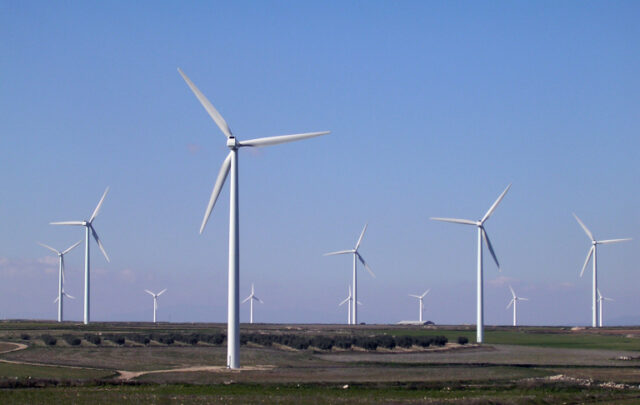This is the third and final part in a series of comments on Professor Peter Odell’s article that appeared in the UK newspaper The Guardian on February 15th, itself a response to an article in the same newspaper by Dr. Jeremy Leggett on February 5th.
In my two previous comments I pointed out the need to use ‘2P’ discovery data if one wished to identify the date of a region’s resource-limited oil production peak; and noted some of the countries already past peak that were cited by Professor Odell as offering significant likely future increases.
Here I want to address briefly five further topics: the scope for enhanced oil recovery (EOR) to impact the predicted date of global peak; the likely availability of non-conventional oil; the fact that regional peaks do not provide a direct analogy for the world peak; the need to examine net-energy rate limits to energy change; and the possible adoption of Colin Campbell’s ‘Depletion Protocol’.
1. EOR: As many know, the amount of conventional oil recovered from oil fields is only a part of the total oil-in-place. There is some dispute as to how large is this fraction as a volume-weighted global average, but between 40% and 50% seems likely. So there is a lot of oil ‘left-behind’. The question is: can this be accessed rapidly enough to impact the date of peak? My co-authors and I addressed this question to some extent in our ‘Energy Policy’ article referred to previously; and estimates for the increase in recovery rate from existing fields are explicitly built in to most of the detailed models I mentioned earlier. On balance, while undoubtedly EOR will access significant quantities of extra oil in future, and certainly a high oil price will encourage this process, with the global conventional peak predicted as very close the scope for EOR to significantly delay this peak is small. Nevertheless, all the detailed models could – in my judgement – benefit from more detailed reservoir engineering assessments to firm up these estimates.
2. Non-Conventional Oil: As many also know, the world contains very large amounts of non-conventional oil. Canada’s tar sands and the Orinoco heavies each contain – at current assumptions on recoverable oil – about 10 years’ worth of global supply; while shale oils have far more potentially available. In addition, there are many other sources of oil and direct oil substitutes, including natural gas liquids, gas-to-liquids, coal-to-liquids and biofuels; as well as ways to substitute away from oil use, such as electric vehicles. As mentioned previously, most detailed models find that it is difficult – or impossible – for these oils in aggregate to fill the gap between the approximately annual 2% ‘business-as-usual’ growth that has been assumed until very recently, and the expected annual decline of 3% or so in conventional oil production once its peak is past. Taken together, this 5% ‘gap’ equates to needing an extra 4 million barrels/day or so to come on-stream each year from the non-conventionals. This is a tall order, given the many constraints – including increased CO2 – that accompany these fuels. However, Professor Odell is right to point out that demand destruction accompanies a high oil price, and this will make the gap easier to fill. This leads directly to the next point.
3. Regional peaks vs. global peak: Over a hundred large regions of the world – countries, US states, on-shore and offshore regions – have gone past their resource-limited peaks. These peaks teach us much about how peaking occurs. But when these regions peaked, there were always other parts of the globe one could turn to for oil. This will not be the case with the global peak; so it is to the ‘alternative oils’, and to demand destruction, that we must look to force supply and demand to balance. Several analysts point to a ‘bumpy plateau’, CERA and the UK government’s former Chief Scientist among these. Such a bumpy plateau may indeed be the case. But driving this plateau will still be regions with the sharp peaks we have come to expect from the US lower-48, Norway, the UK and so many others. And as Lord Oxburgh points out, even a smooth plateau is a very uncomfortable place for a world that once again had come to expect ever-increasing supplies of oil.
4. Net-energy rate limits: So what limits mankind’s ability to bring on new sources of energy to replace the declining conventional oil? Clearly needed are a ready technologies, adequate investments, skilled manpower in the right locations, access to enough water, gas or other inputs for the processes in question, enough room for tailings if produced in large quantities, and the willingness to accept the CO2 impacts – or to sequester. The excellent study by Hirsch, Bezdek and Wendling on the time needed to adjust to an oil peak is essential reading in this regard. But also perhaps – and in my view very probably – there is a need to understand the net-energy rate-limits that limit the useful rate that any energy change can be brought in. Virtually all new energy sources, and energy savings schemes, employ some energy to introduce. A simple calculation shows that if growth in the use of these sources, or in the deployment of these schemes, exceeds a critical annual rate no net energy is produced by the sources, or saved by the savings schemes. At the end of the growth period, large energy sources or energy savings become available; but during the growth phase the overall energy produced, or saved, is zero. This effect is proportional: at half the critical growth rate only half the extra energy supply, or energy saving, is achieved; at above this rate the net energy is negative; society is worse off in energy terms. Because peaking is only recently becoming re-understood, few as yet have done the requisite calculations. Such calculations are needed if we are to understand the possible energy paths that lie open to us.
5. The ‘Depletion Protocol’ of Colin Campbell: At present we have a high oil price. It may go away for a while – several large new oil projects are underway – but generally a high price is to be expected into the future until some major shift in the global energy supply/demand balance occurs. High oil prices have already hurt developing countries, and are a contributory factor in the global slowdown. In addition, the large international transfers of funds have consequences that are mixed. A simple way to manage the situation was put forward by Dr. Colin Campbell in his ‘Depletion Protocol’ Details of this can be found on various websites, but in essence its says that countries decide individually to manage their demand down in line with the fairly modest expected decline in global oil supply. This takes the pressure off prices, and allows rich and poorer countries alike to face more stable economic conditions. Probably the Protocol is too idealistic for the real world in which we live, but it points up the advantages of intelligent demand management; and its concept allows us to understand that there is nothing inevitable about high prices in a resource-constrained world. The market can be very efficient at helping us allocate scarce resources. But it fails completely where something important is outside the market’s cost function, whether this is CO2 (see Stern) or other pollutants, health and safety issues, or fairness and social stability. In all such cases modern governments add legislation, or impose costs, to constrain the market. Oil depletion may well be such a case.
In conclusion I would like to finish this series by noting:
– It is a pity we have had to wait for $100/bbl oil before the calculations by competent scientists have been examined in detail.
– The peak of conventional oil is not the end of the world. We still have half of this left; a lot more to access, if slowly, by EOR; and many non-conventional oils and oil substitutes.
– However, the emissions of CO2 – especially of coal and coal-to-liquids if the world moves rapidly in this direction – may indeed be the end of an easily habitable world for mankind; so the oil peak needs to be looked at closely by the IPCC modellers.
– Mankind has shown it can collaborate if faced with difficult problems. The successful treaties on the law of the sea, on maritime transport, on activities in the Antarctic, on various pollutants including CFCs and more recently other POPs, and the recent institution of an international criminal court all point to what can be done. But first the problem must be understood.
I hope these comments have helped in this regard. Many thanks for reading this. – Roger Bentley.
Dr. Roger W. Bentley is Visiting Research Fellow, Department of Cybernetics, University of Reading





